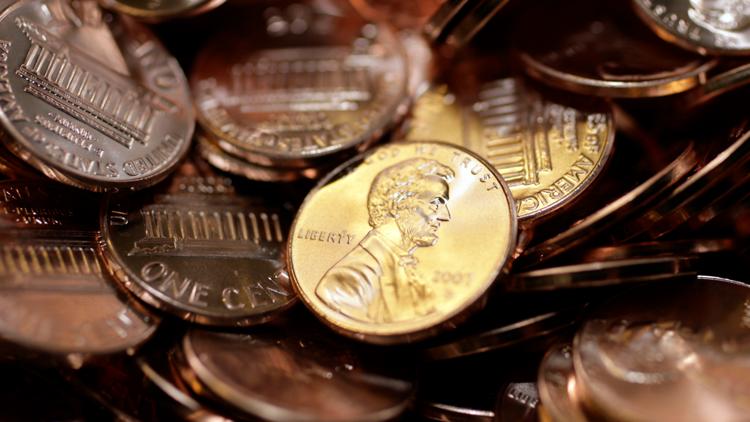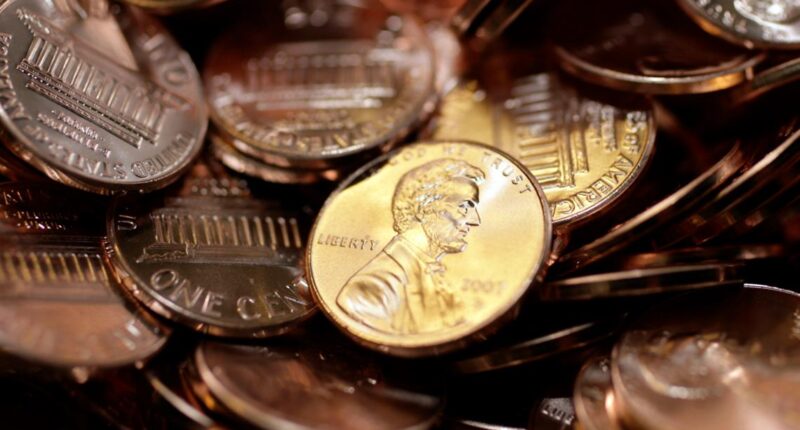
Fans of the penny cite its usefulness in charity drives and relative bargain in production costs compared with the nickel.
WASHINGTON — The Trump administration says making cents doesn’t make sense anymore.
The Treasury Department official confirmed that the U.S. Mint has placed its final order of penny blanks and is planning to cease production of the coin once the current supply runs out. The decision to stop producing pennies is due to a significant increase in production costs, which rose by over 20% in 2024.
By discontinuing the production of the penny, the Treasury is anticipating an immediate annual cost-saving of $56 million in reduced material expenses. The official, who spoke on the condition of anonymity as they were not authorized to discuss the matter publicly, shared this information in advance to announce the news.
In February, President Donald Trump announced that he had ordered his administration to cease production of the 1-cent coin.
Previously, former President Trump criticized the inefficiency of minting pennies, stating that the coins were costing more than their actual value. Trump expressed his dissatisfaction with the wasteful spending on pennies and instructed the Secretary of the U.S. Treasury to halt the production of new pennies.
There are about 114 billion pennies currently in circulation in the United States — that’s $1.14 billion — but they are greatly underutilized, the Treasury says. The penny was one of the first coins made by the U.S. Mint after its establishment in 1792.
The nation’s treasury secretary has the authority to mint and issue coins “in amounts the secretary decides are necessary to meet the needs of the United States.”
Advocates for ditching the penny cite its high production cost — almost 4 cents per penny now, according to the U.S. Mint — and limited utility. Fans of the penny cite its usefulness in charity drives and relative bargain in production costs compared with the nickel, which costs almost 14 cents to mint.
The Wall Street Journal first reported the news.
Pennies are the most popular coin made by the U.S. Mint, which reported making 3.2 billion of them last year. That’s more than half of all the new coins it made last year.
Congress, which dictates currency specifications such as the size and metal content of coins, could make Trump’s order permanent through law. But past congressional efforts to ditch the penny have failed.
Two bipartisan bills to kill the penny permanently were introduced this year.
Sens. Mike Lee, R-Utah, and Jeff Merkley, D-Ore., introduced the Make Sense Not Cents Act this month. In April, Reps. Lisa McClain, R-Mich., and Robert Garcia, D-Calif., along with Sens. Cynthia Lummis, R-Wyo., and Kirsten Gillibrand, D-N.Y., introduced the Common Cents Act.
Jay Zagorsky, professor or markets, public policy, and law at Boston University, said that while he supports the move to end penny production, Congress must include language in any proposed legislation to require rounding up in pricing, which will eliminate the demand for pennies.
Zagorsky, who recently published a book called “The Power of Cash: Why Using Paper Money is Good for You and Society,” said otherwise simply ditching the penny will only increase demand for nickels, which are even more expensive, at 14 cents to produce.
“If we suddenly have to produce a lot of nickels — and we lose more money on producing every nickel — eliminating the penny doesn’t make any sense.”
Suderman reported from Richmond, Virginia.
Copyright 2025 Associated Press. All rights reserved. This material may not be published, broadcast, rewritten, or redistributed.

















